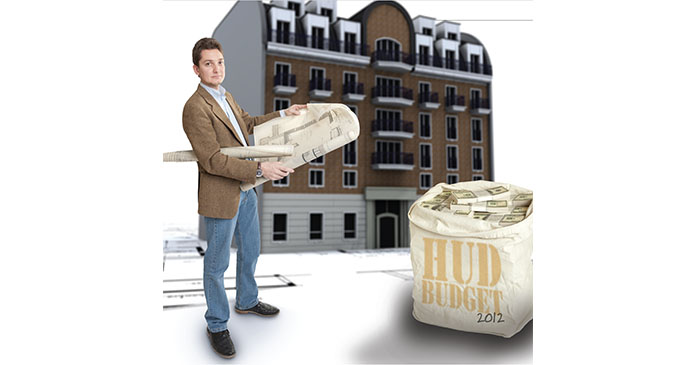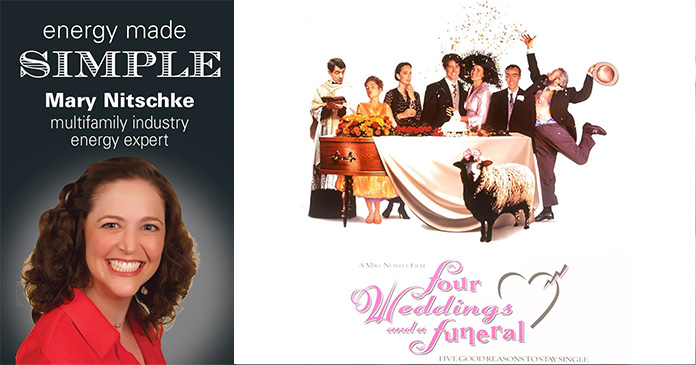In line with President Barack Obama’s directive to cut the deficit by $400 billion over the next decade, HUD’s budget creates no new programs and proposes additional funding only for programs that assist the most needy Americans.
Bolstering those programs led HUD to make the tough decisions to cut other programs like Community Development Block Grant (CDBG), HOME Investment Partnerships program and public housing for the elderly and persons with disabilities, all of which Housing Secretary Shaun Donovan said would not have been made in the absence of the current spending squeeze.
HUD’s budget slashes CDBG by $300 million, or 7.5 percent, and HOME Investment Partnership by $175 million, the latter representing a 9.5 percent cut from 2010 (the budget for 2011 is still pending).
Several other programs also were trimmed, including the USDA’s rural rental assistance program, which would receive an allocation of $906 million, $65 million less than FY 2010 levels.
The USDA Sec. 538, which guarantees loans for new construction, rehabilitation and permanent financing in rural areas, got the axe in what some public housing authorities see as a greater administrative shift toward a focus on urban areas.
As in previous years, Donovan put rental assistance and assistance for the homeless at the top of his budget priorities list. Approximately 80 percent of HUD’s FY12 budget request is earmarked for renewing existing rental assistance, funding accrued public housing capital needs and renewing existing homeless assistance grants.
Funds directed toward affordable rental housing include $19.2 billion in rental assistance for low-income families through the Housing Choice Voucher Program, which Donovan says will help more than two million extremely low- to low-income families, and $9.4 billion in project-based assistance for the rehab and preservation of 1.3 million existing affordable rental units through increased funding for contracts with private owners of multifamily properties.
“With more than one-third of all American families renting their homes, it remains more important than ever to provide a sufficient supply of affordable rental homes for low-income families, and HUD investments are vital to that end,” said the housing secretary, whose resume includes positions in business, academia and with HUD during the Clinton Administration, as well as four years as housing commissioner of New York City under Mayor Michael Bloomberg.
HUD also made FHA’s multifamily mortgage insurance a priority in 2012 with a commitment of $12.8 billion. Construction made possible with that funding will generate 85,000 jobs annually, said Donovan.
Two major changes to the low-income housing tax credit (LIHTC) were proposed for FY12—income averaging and a basis boost for the preservation of public and assisted housing—to provide incentives for mixedincome housing and allow a 30 percent basis boost for some four-percent credit, taxexempt, bond financed preservation deals.
The income averaging change would allow properties to serve higher income tenants than is currently allowed if they also house lower income tenants.
Under this plan, at least 40 percent of the units in a building would have to be occupied by residents whose incomes average no more than 60 percent of the average median income (AMI). No residents in rent-restricted units could have an income greater than 80 percent of AMI and units with an income limit of 20 percent of AMI would be considered to have a 20 percent limit for purposes of the average income calculation.
“These changes to the code’s low-income occupancy requirements will allow greater income-mixing at the project level, help align LIHTC with HUD’s and USDA’s affordable housing programs (which define low-income at 80 percent of area median income) and lead to the creation of more units targeted to the lowest incomes.
“Currently, 69,224 households living in public housing and 28,475 households in multifamily housing have incomes above 60 percent of AMI and many of them pay more in rent than they can reasonably afford. Many of these households could benefit from the income-averaging proposal if they live in or move to units that are being newly refinanced or redeveloped using LIHTCs.
“In addition, it will enable the creation of affordable housing in strong real estate markets where even moderate income—between 60 and 80 percent of AMI—families struggle to find affordable housing. This proposal will allow LIHTC-supported properties to serve them, as well as poorer households. By reducing the situations in which the developer will not be able to count the basis allocable to a tenant’s unit unless the tenant moves out, the proposal increases the federal government’s ability to preserve federally assisted properties,” said Donovan.
A vital component of HUD’s goals and a key for developers who will seek HUD funds in the future, will be promoting an innovative clean-energy economy. HUD will work to improve the energy efficiency of 245,000 HUD-assisted affordable homes through energy retrofits and is completing green retrofits of 19,000 privately owned, federally assisted multifamily units.
Another 35,000 homes have received deep green retrofits that will save up to 40 percent in energy costs and thousands more newly constructed homes are being built to green standards.
“Starting this spring, HUD will offer multifamily owners and developers a variety of tools and resources for making their properties more energy efficient and environmentally sustainable. These incentives will not involve new federal spending. Instead, they will offer voluntary, market-based incentives and better information to multifamily developers, owners and operators,” said Donovan.
The incentives include Green Refinance Plus, wider access to project income (residual receipts and other distributions) to support energy improvement investments and a $25 million competitive grant program (from previously appropriated funds) to seed innovative approaches that leverage private capital in demonstrating replicable approaches to longstanding barriers to retrofitting multifamily buildings. These, and potentially other incentives will be available in the market over the next several months.
FHA, through the Green Refinance Plus program, will provide additional insurance coverage and Fannie Mae will offer more flexible loan underwriting to generate additional loan proceeds to help multifamily owners make green improvements.
“Owners of older affordable housing properties will be the first to go green in connection with refinancing their mortgages at today’s historically low interest rates,” said Donovan.
“The information tools include an effort in development to integrate energy and environmental assessments into traditional physical needs assessments that have been commonplace in the industry for decades,” said Donovan.
He believes that the typical physical needs assessment (PNA) and capital needs assessment (CNA) process today misses opportunities to give owners information on their options for making greener capital improvements when they reinvest in their property.
For that reason, HUD pioneered a “green CNA tool” in the Green Retrofit Program (GRP), which was created and is working to apply the concept more widely in multifamily programs. The GRP was created through the Recovery Act to build on the successes of the Mark to Market program. It provides loans or grants for green improvements to affordable housing owners.
“A green CNA can ensure owners make the greenest, as well as the most cost effective capital investments in their properties, setting the stage for more favorable financing to make those improvements possible,” said Donovan.
HUD is also working to align and strengthen the basic energy performance requirements in HUD multifamily programs. The goal is to reduce confusion and redundancy across the HUD multifamily platform, while continuing to encourage more energy efficient multifamily housing.
Finally, HUD is committed to continue working with the Department of Energy (DOE) to expand the use of the Weatherization Assistance Program for multifamily retrofits. Thanks to HUD’s efforts and its partnership with DOE, 19.5 percent of units weatherized to date under the $5 billion authorized for the program by the Recovery Act have been multifamily units—double the program’s historical average. Donovan said there might be opportunity to increase that percentage further with the remaining Recovery Act funds.
But, he points out that location is crucial to real and lasting economic and environmental sustainability.
“It isn’t just about the kind of buildings we build, but also where we build them. It’s no coincidence that the neighborhoods that faced the brunt of the crisis—with the highest foreclosure rates and the deepest job losses—were the most unsustainable, with the least access to transportation, the most troubled schools and the least economic opportunity.
“This economic crisis illustrates how, when Washington fails to think about our nation’s future the same way communities and regions think about theirs, every American pays the price,” said Donovan.
To help connect housing to jobs and correct the mismatch between where people live and work, HUD has incorporated criteria from the LEED-Neighborhood Development green neighborhood rating system to score HUD grant applications on their location efficiency, i.e. the extent to which they help residents connect conveniently and affordably to jobs, schools, shops and other amenities through a range of transportation options.
In 2009, HUD made changes to remediation requirements that are helping to facilitate broader use of FHA mortgage insurance programs in conjunction with environmentally challenged sites, many of which tend to be located in urban core areas ripe for revitalization.
Although the modified requirements are not specifically geared toward brownfield sites, many of the flexibilities and modernized processing requirements introduced in the policy assist in the redevelopment of sites that are within walking distance or accessible by mass transportation to employment and education centers, cultural and recreational activities, health and childcare providers, and other community services and activities, said Donovan.
“Such locations act as linchpins to longterm sustainability by providing attractive amenities and accessibility options to residents, reducing transportation costs and decreasing geographic isolation of neighborhoods,” said Donovan.
Lastly, in response to Multihousing Professional reader Gina Leachman, business development executive with EAH Housing, a nonprofit developer and manager of affordable housing, the HUD secretary quelled concerns about cuts to Veterans Affairs Supportive Housing (HUD-VASH) vouchers.
“The Obama Administration has a firm commitment to ending veterans’ homelessness in five years with efforts through the Federal Strategic Plan. In the President’s proposed FY 2012 budget, HUD requested $75 million in HUD-VASH vouchers and is working with the U.S. Department of Veteran’s Affairs (VA) to develop innovative strategies,” said Donovan.
HUD, in conjunction with and the Health and Human Services Department (HHS), also is requesting $56.9 million in HUDHHS vouchers, a program that will fund tenant-based rental assistance for homeless families and chronically homeless persons.
HUD-VASH earmarks for FY12 likely will not get much pushback. Even with the cost cutting mood on Capitol Hill, total bipartisan cooperation on VASH is expected.
Author Wendy Broffman
















